Endoplasmic reticulum stress inhibition protects steatotic and non-steatotic livers in partial hepatectomy under ischemia-reperfusion
- PMID: 21364657
- PMCID: PMC3032561
- DOI: 10.1038/cddis.2010.29
Endoplasmic reticulum stress inhibition protects steatotic and non-steatotic livers in partial hepatectomy under ischemia-reperfusion
Abstract
During partial hepatectomy, ischemia-reperfusion (I/R) is commonly applied in clinical practice to reduce blood flow. Steatotic livers show impaired regenerative response and reduced tolerance to hepatic injury. We examined the effects of tauroursodeoxycholic acid (TUDCA) and 4-phenyl butyric acid (PBA) in steatotic and non-steatotic livers during partial hepatectomy under I/R (PH+I/R). Their effects on the induction of unfolded protein response (UPR) and endoplasmic reticulum (ER) stress were also evaluated. We report that PBA, and especially TUDCA, reduced inflammation, apoptosis and necrosis, and improved liver regeneration in both liver types. Both compounds, especially TUDCA, protected both liver types against ER damage, as they reduced the activation of two of the three pathways of UPR (namely inositol-requiring enzyme and PKR-like ER kinase) and their target molecules caspase 12, c-Jun N-terminal kinase and C/EBP homologous protein-10. Only TUDCA, possibly mediated by extracellular signal-regulated kinase upregulation, inactivated glycogen synthase kinase-3β. This is turn, inactivated mitochondrial voltage-dependent anion channel, reduced cytochrome c release from the mitochondria and caspase 9 activation and protected both liver types against mitochondrial damage. These findings indicate that chemical chaperones, especially TUDCA, could protect steatotic and non-steatotic livers against injury and regeneration failure after PH+I/R.
Figures
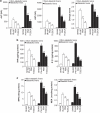
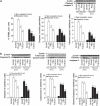


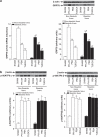
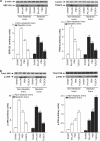
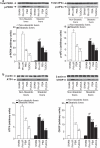

References
-
- Ramalho FS, Alfany-Fernandez I, Casillas-Ramirez A, Massip-Salcedo M, Serafin A, Rimola A, et al. Are angiotensin II receptor antagonists useful strategies in steatotic and nonsteatotic livers in conditions of partial hepatectomy under ischemia-reperfusion. J Pharmacol Exp Ther. 2009;329:130–140. - PubMed
-
- Yoneda T, Imaizumi K, Oono K, Yui D, Gomi F, Katayama T, et al. Activation of caspase-12, an endoplastic reticulum (ER) resident caspase, through tumor necrosis factor receptor-associated factor 2-dependent mechanism in response to the ER stress. J Biol Chem. 2001;276:13935–13940. - PubMed
Publication types
MeSH terms
Substances
LinkOut - more resources
Full Text Sources
Other Literature Sources
Research Materials
Miscellaneous

